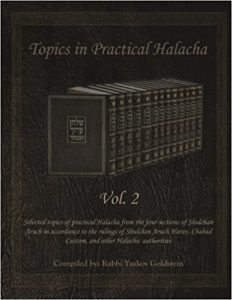This article is an excerpt from our Sefer
Lifting the eyes during Kedusha:[1]
It is customary to lift one’s eyes upwards [towards heaven] upon saying the words Kadosh Kadosh Kadosh[2] [during Kedusha of Chazaras Hashatz].[3] It is proper for the eyes to be closed while they are raised.[4]
The greatness of this custom:[5] A support for this custom is found in Sefer Heichalos[6] “Blessed are you to Hashem, the Heavens and those that descend on the Divine chariot[7], if you will say and relate to my children that which I do at the time that they sanctify and say “Kadosh Kadosh Kadosh”. Teach them that [at this time] their eyes are to be raised to the Heavens, to their prayer houses, and they should lift themselves above. There is no pleasure in the world like that moment when their eyes are raised and meet with my eyes, and my eyes with their eyes[8], and at that moment I grasp my Kisei Hakovod, which contains a resemblance of Yaakov, and I hug it and kiss it and remember their exile, and quicken their redemption.
_________________________________________________________________
[1] Admur 125:3; Rama 125:1; Tur in name of Minhag Ashkenaz and France; Shivlei Haleket based on Sefer Heichalos; Ketzos Hashulchan 22:8
[2] So is the wording in Admur and in the Sefer Heichalos brought by Taz 125:2 and Admur ibid, however the Rama ibid simply writes Kedusha.
Other opinions and Sephardic custom: Some Poskim write one is only to lift the eyes upwards for the first word of Kadosh. [Ateres Zekeinim 125] Other Poskim write that one is to lift the eyes for Nakdishach, and lower them for Kadosh Kadosh Kadosh. [Makor Chaim of Chavos Yair 125:2;] The Sephardic custom is to place the eyes downwards upon reciting Kadosh Kadosh Kadosh. [P”M 125 M”Z 2] Practically, we lift the eyes for all three words of Kadosh, as so is implied from the majority of Poskim. [Elya Raba 125:3]
Custom of Rebbe and Chabad: In reply to the question regarding the Chabad custom, and custom of the Rebbe, regarding lifting the eyes towards heaven during Kedusha, Rav Groner responded “We never saw the Rebbe lifting his eyes at that time. Neither did the Altere Chassidim” Rav Eli Landa responded that indeed the Rebbe recited it from within the Siddur and did not raise his eyes, although he was hesitant to deduce from here that so should be the public practice.
[3] Admur ibid; Rama ibid
[4] Admur ibid; Taz 125:2; Soles Belula 125:2; Shalmei Tzibur brought in Kaf Hachaim 125:9; Arizal, as brought in all the following Poskim; Chida in Machazik Bracha 125:3 and Kesher Gudal 18:18; Shaareiy Teshuvah 125:3; Ben Ish Chaiy Teruma 4; Kitzur SHU”A 20:4; Aruch Hashulchan 125:3; Kaf Hachaim 125:9
The reason: As it is not proper to have revealed eyes facing upwards, as during prayer one’s eyes are meant to point below, while ones heart is to be directed above. [Taz ibid]
Other opinions: Some Poskim rule that the eyes are to be open upon saying Kadosh. [Bach 125, brought in P”M 125 M”Z 2; Elya Raba 125:3; Rashal in Yam Shel Shlomo Yevamos 12:21; Magen Giborim; M”B 125:6]
[5] Admur ibid; Taz 125:2; Tur 125; Shivlei Haleket; Elya Raba 125:3; Soles Belula 125:2; Shalmei Tzibur brought in Kaf Hachaim 125:8
[6] Heichalos is a generic name for the journals written by the Sages who traveled through the spiritual worlds called Pardes. One of these Sefarim is known as Heichalos of Rebbe Yishmael Kohen Gadol, which includes thirty chapters of mystical descriptions of occurrences within the spiritual worlds upon the visitation of Rebbe Yishmael.
[7] The term “Yordei Hamerkava” refers to the Tzaddikim who entered into Pardes, and were revealed the above information. Amongst those Sages known to have traveled within Pardes is Rebbe Yishmael Ben Elisha, Rebbe Akiva, Rebbe Nechunya Ben Hakana; Rebbe Nasan, and other Sages mentioned in the Sifrei Heichalos.
[8] This is the end of the wording of the Sefer Heichalos, the remaining wording is brought in the Shivlei Haleket, and mentioned in Taz and Admur ibid



Leave A Comment?
You must be logged in to post a comment.